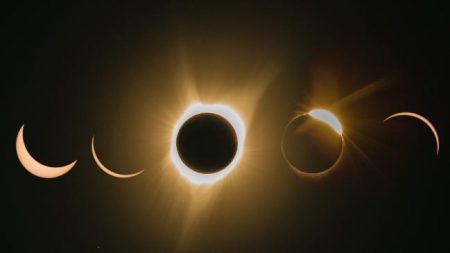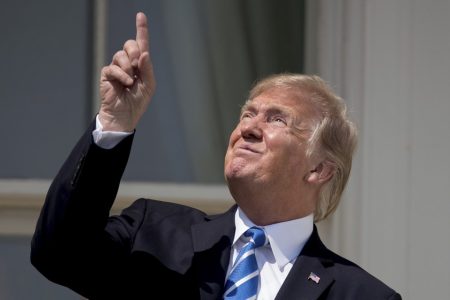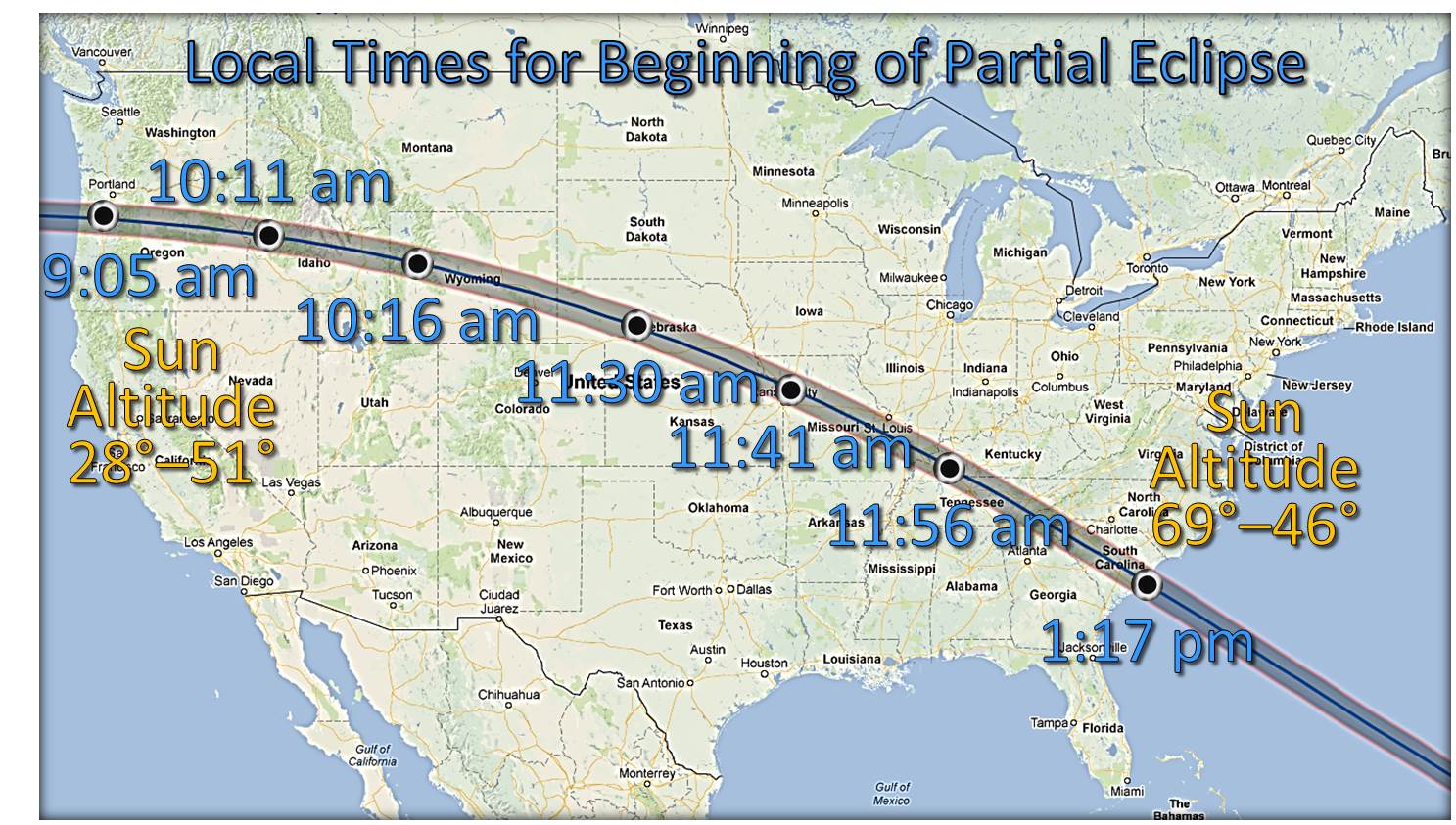August 22, 2017 – I don’t know what the solar eclipse experience was like where you live, but here in Toronto we had a beautifully clear day and unlike Donald Trump, I chose not to stare at the Sun without protective eyewear. At peak around 2:15 p.m. the light took on a subdued appearance. It was as if we were suddenly an hour before sunset rather than the early afternoon. Toronto saw about 70% of the Sun covered by the New Moon. But on television and my computer, I could watch live feeds from various parts of the United States as the full eclipse tracked from the Pacific Northwest to the Carolina coast.
The odd thing was the direction of the progress of the Moon’s shadow. It was opposite to the Moon’s orbit. Or at least that’s what it seems from my perspective here on Earth. The Sun and Moon both appear to rise in the East and set in the West every day. Through a lunar cycle, the Moon’s rise is later each night until it appears in the daytime, a ghostly semblance of its evening self. Remember neither the Moon or the Sun actually rise. It is the Earth that rotates clockwise as it orbits the Sun, creating the illusion of sunrise, moonrise, sunset, and moonset.
Well here’s the shocker.
The Moon actually orbits from West to East, that is counterclockwise to the Earth’s spin. That’s why the Moon rises later each day throughout a complete lunar cycle. And since the Moon is traveling at a very slow speed of 1 kilometer (0.6 miles) per second it takes it 30 days to complete one orbit of our Earth. And where the Moon goes so does it shadow. So itr passes in the same direction as its orbit and hence the path of the eclipse travels in the opposite direction of what we perceive to be the truth.
We are fortunate to have arisen as a species at a time when the relationship of size between Moon and the solar disk is perfect for eclipse events. It is as if some entity planned this to inspire humans to look up at the sky in wonder. But it is no more than a wonderful juxtaposition of fortunate timing and the relative size and distance between two celestial objects.
The Moon is a small rock compared to the ball of fire that is our Sun. In contemporary times it sits at a precise distance between the Earth and Sun to make an eclipse of the latter possible. If the Moon were smaller, or if its orbit was further away, we would never witness the coronal glow of a completely eclipsed Sun.
It wasn’t always the case here on Earth.
Back in the Cambrian Period, over 500 million years ago, the Moon’s orbit was far closer to Earth with a lunar month lasting a mere 18 days. An eclipse would have been a major life-threatening Earth event back then. Not only would the Sun have been obscured for several hours over a wide swath of the planet, but its direct alignment with the Moon would have combined the pull of gravity from both objects to create exaggerated tidal forces compared to today. Oceans would have risen as high as 30 meters (100 feet) during an eclipse event. Earth’s continental plates would have also felt the tug contributing to earthquakes, and other Earth-moving events. So we are fortunate to be a species insynch with the Moon and Sun’s orientation today. They are both just the right distance to make solar eclipses truly spectacular. And they are both the right distance to not turn our planet into an Earth-shaking terror ride.
Today’s eclipses may have gotten a few solar utility operators worried for a few minutes as their power source winked out. But other than that, the only threat came from human indifference to the advice given by scientists. They said, “don’t look directly at the Sun without protective eyewear during the eclipse until the Moon completely covers the solar mass.” Now if you don’t believe scientists, as in people like Donald Trump, then you can just go ahead and look all you want.













